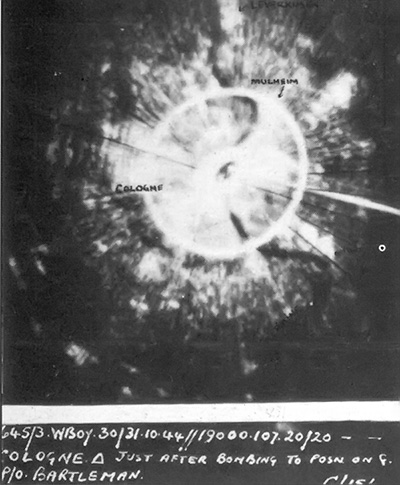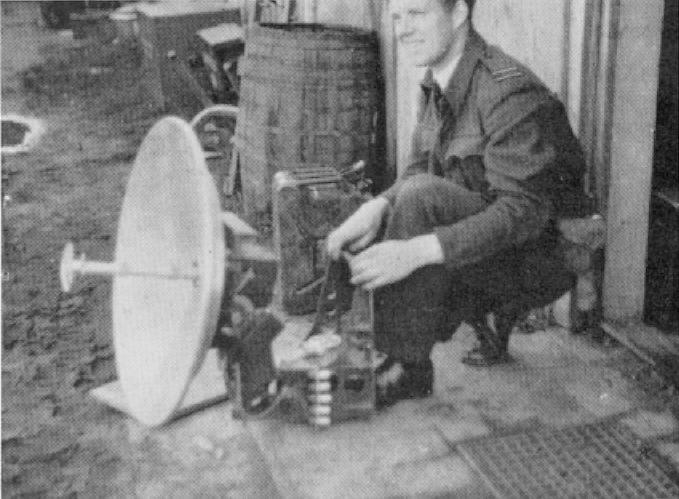|
Berlin (radar)
''Berlin'' can refer to several German 9 cm wavelength (3.3 GHz) microwave radars of World War II, developed after the capture of examples of the British cavity magnetron in the H2S radar H2S was the first airborne, ground scanning radar system. It was developed for the Royal Air Force's Bomber Command during World War II to identify targets on the ground for night and all-weather bombing. This allowed attacks outside the ran .... * FuG 224 ''Berlin A'' of 1944, a PPI ground mapping radar * FuG 240 ''Berlin'' N1 of 1945, an airborne interception radar for nightfighters * FuMO 81, a naval development of the FuG 224 * FuMO 83 ''Berlin I'', for U-boats * FuMO 84 ''Berlin II'', for the type XXI U-boat {{Set index article World War II German radars ... [...More Info...] [...Related Items...] OR: [Wikipedia] [Google] [Baidu] |
Cavity Magnetron
The cavity magnetron is a high-power vacuum tube used in early radar systems and currently in microwave ovens and linear particle accelerators. It generates microwaves using the interaction of a stream of electrons with a magnetic field while moving past a series of cavity resonators, which are small, open cavities in a metal block. Electrons pass by the cavities and cause microwaves to oscillate within, similar to the functioning of a whistle producing a tone when excited by an air stream blown past its opening. The resonant frequency of the arrangement is determined by the cavities' physical dimensions. Unlike other vacuum tubes, such as a klystron or a traveling-wave tube (TWT), the magnetron cannot function as an amplifier for increasing the intensity of an applied microwave signal; the magnetron serves solely as an oscillator, generating a microwave signal from direct current electricity supplied to the vacuum tube. The use of magnetic fields as a means to control the f ... [...More Info...] [...Related Items...] OR: [Wikipedia] [Google] [Baidu] |
H2S Radar
H2S was the first airborne, ground scanning radar system. It was developed for the Royal Air Force's Bomber Command during World War II to identify targets on the ground for night and all-weather bombing. This allowed attacks outside the range of the various radio navigation aids like Gee or Oboe, which were limited to about . It was also widely used as a general navigation system, allowing landmarks to be identified at long range. In March 1941, experiments with an early airborne interception radar based on the 9.1 cm wavelength, (3 GHz) cavity magnetron revealed that different objects have very different radar signatures; water, open land and built-up areas of cities and towns all produced distinct returns. In January 1942, a new team was set up to combine the magnetron with a new scanning antenna and plan-position indicator display. The prototype's first use in April confirmed that a map of the area below the aircraft could be produced using radar. The first systems ... [...More Info...] [...Related Items...] OR: [Wikipedia] [Google] [Baidu] |
FuG 224 Berlin A
FuG 224 ''Berlin A'' was a German airborne radar of World War II. It used rotating antennae and a PPI (Plan Position Indicator) display to allow its use for ground mapping. Although only a handful of sets were constructed, they saw service on the Fw 200 ''Condor''. Description Influence of the British cavity magnetron FuG 224 ''Berlin A'', and the contemporary FuG 240 ''Berlin N1'' or ''Nachtjagd'' air interception radar, both made use of captured examples of the British cavity magnetron in the H2S radar. A H2S-equipped Short Stirling bomber had crashed near Rotterdam on the night of 2 February 1943. This led to H2S being given the German codename ''Rotterdam Gerät''. Telefunken were instructed to examine the wreckage and build six replicas of it. This study also led to the development of the Naxos radar detector against it. Telefunken studied the design of the cavity magnetron and found it superior to the German split-anode magnetrons, particularly for its ... [...More Info...] [...Related Items...] OR: [Wikipedia] [Google] [Baidu] |
FuG 240 Berlin
The FuG 240 "Berlin" was an airborne interception radar system operating at the "lowest end" of the SHF radio band (at about 3.3 GHz/9.1 cm wavelength), which the German Luftwaffe introduced at the very end of World War II. It was the first German radar to be based on the cavity magnetron, which eliminated the need for the large multiple dipole-based antenna arrays seen on earlier radars, thereby greatly increasing the performance of the night fighters. Introduced by Telefunken in April 1945, only about 25 units saw service. Background The German Luftwaffe first introduced an airborne interception radar in 1942, the FuG 202 "Lichtenstein B/C" and its direct follow-on version, the FuG 212 Lichtenstein C-1. Both units operated at 490MHz, in the low UHF band with a wavelength of 0.61 meter. Radar antennas are sized roughly to the operational wavelength, or a fraction thereof, so the FuG 202 and 212 initially required large, 32-dipole ''Matratze'' (mattress) antenna arrays that ... [...More Info...] [...Related Items...] OR: [Wikipedia] [Google] [Baidu] |
FuMO 81
FuG 224 ''Berlin A'' was a German airborne radar of World War II. It used rotating antennae and a PPI (Plan Position Indicator) display to allow its use for ground mapping. Although only a handful of sets were constructed, they saw service on the Fw 200 ''Condor''. Description Influence of the British cavity magnetron FuG 224 ''Berlin A'', and the contemporary FuG 240 ''Berlin N1'' or ''Nachtjagd'' air interception radar, both made use of captured examples of the British cavity magnetron in the H2S radar. A H2S-equipped Short Stirling bomber had crashed near Rotterdam on the night of 2 February 1943. This led to H2S being given the German codename ''Rotterdam Gerät''. Telefunken were instructed to examine the wreckage and build six replicas of it. This study also led to the development of the Naxos radar detector against it. Telefunken studied the design of the cavity magnetron and found it superior to the German split-anode magnetrons, particularly for its ... [...More Info...] [...Related Items...] OR: [Wikipedia] [Google] [Baidu] |
FuMO 83 Berlin I
FuG 224 ''Berlin A'' was a German airborne radar of World War II. It used rotating antennae and a PPI (Plan Position Indicator) display to allow its use for ground mapping. Although only a handful of sets were constructed, they saw service on the Fw 200 ''Condor''. Description Influence of the British cavity magnetron FuG 224 ''Berlin A'', and the contemporary FuG 240 ''Berlin N1'' or ''Nachtjagd'' air interception radar, both made use of captured examples of the British cavity magnetron in the H2S radar. A H2S-equipped Short Stirling bomber had crashed near Rotterdam on the night of 2 February 1943. This led to H2S being given the German codename ''Rotterdam Gerät''. Telefunken were instructed to examine the wreckage and build six replicas of it. This study also led to the development of the Naxos radar detector against it. Telefunken studied the design of the cavity magnetron and found it superior to the German split-anode magnetrons, particularly for its ... [...More Info...] [...Related Items...] OR: [Wikipedia] [Google] [Baidu] |
FuMO 84 Berlin II
FuG 224 ''Berlin A'' was a German airborne radar of World War II. It used rotating antennae and a PPI (Plan Position Indicator) display to allow its use for ground mapping. Although only a handful of sets were constructed, they saw service on the Fw 200 ''Condor''. Description Influence of the British cavity magnetron FuG 224 ''Berlin A'', and the contemporary FuG 240 ''Berlin N1'' or ''Nachtjagd'' air interception radar, both made use of captured examples of the British cavity magnetron in the H2S radar. A H2S-equipped Short Stirling bomber had crashed near Rotterdam on the night of 2 February 1943. This led to H2S being given the German codename ''Rotterdam Gerät''. Telefunken were instructed to examine the wreckage and build six replicas of it. This study also led to the development of the Naxos radar detector against it. Telefunken studied the design of the cavity magnetron and found it superior to the German split-anode magnetrons, particularly for its ... [...More Info...] [...Related Items...] OR: [Wikipedia] [Google] [Baidu] |


